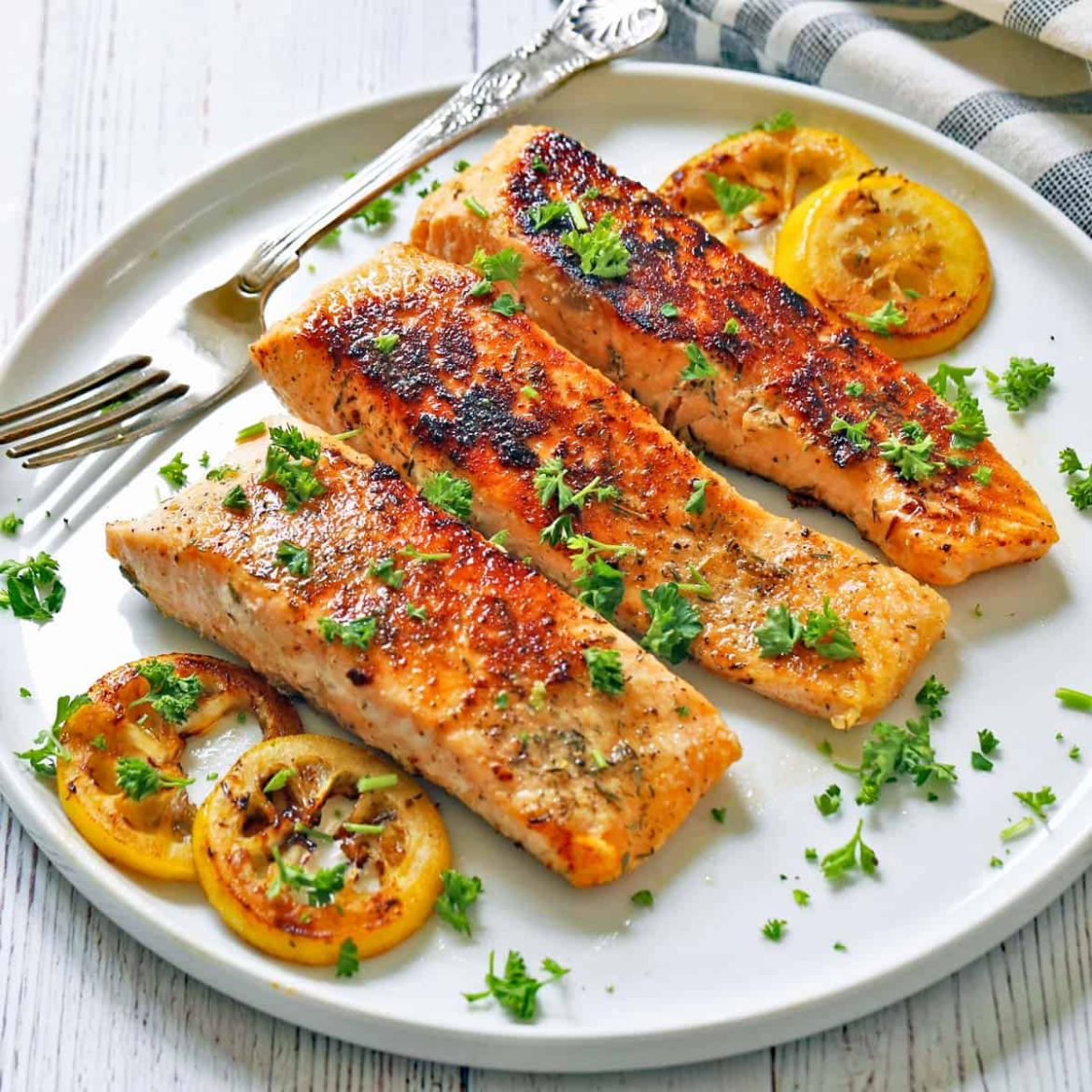Pan-fried salmon is delicious when cooked in butter and olive oil. The skin becomes wonderfully crispy, and the flesh is juicy and flavorful.
Who needs fast food when this homemade dish is ready in fifteen minutes? Even the leftovers are good, especially in a salad.

I enjoy salmon recipes such as salmon steak, baked salmon, and grilled salmon. This pan-fried salmon is especially good because the skin becomes wonderfully crispy when seared in butter in a hot skillet.
The bonus: it’s an easy meal to prepare, making it suitable for a quick weeknight dinner.
Jump to:
Ingredients
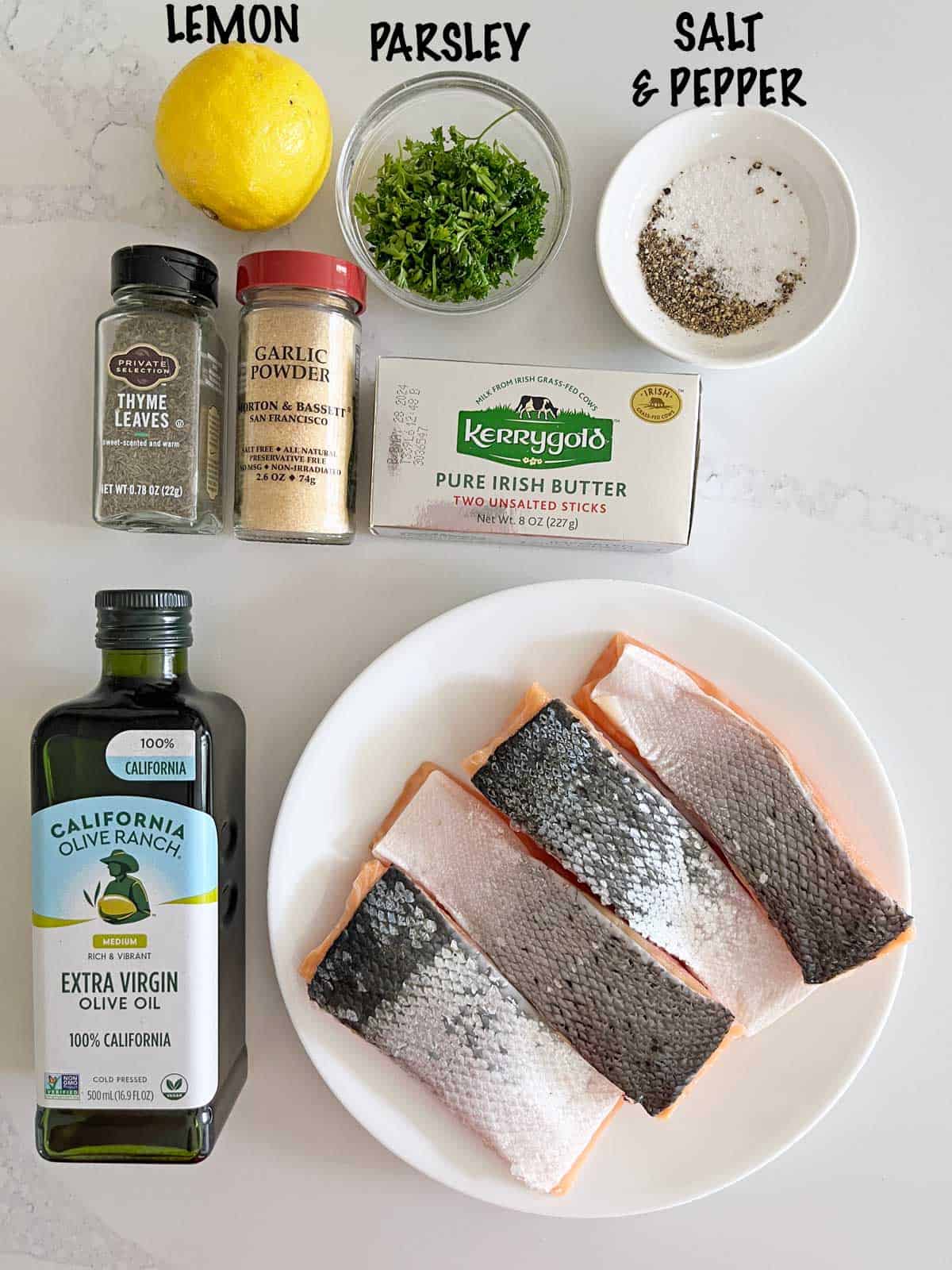

You’ll only need a few simple ingredients to make this recipe. The exact measurements are listed in the recipe card below. Here’s an overview of what you’ll need:
- Salmon fillets: I prefer skin-on fillets. Salmon skin is delicious, especially in this recipe, when it becomes crispy.
- To season: Kosher salt, black pepper, garlic powder, and dried thyme.
- For frying: I use a mix of olive oil and butter.
- Optional additions: Lemon slices and chopped parsley.
Variations
- The best way to vary this recipe is to experiment with different spices and herbs. Good options I tried and liked include onion powder, paprika, and dried oregano. You can add ½ teaspoon of each additional spice or herb.
- You can skip the butter and cook the salmon in two tablespoons of olive oil. However, butter enhances the salmon’s flavor.
- Alternatively, you can skip the olive oil and use two tablespoons of butter. The butter’s milk solids have a blackening effect (similar to blackened salmon), making the salmon extra-crispy.
Instructions
The detailed instructions for making this recipe are included in the recipe card below. Here’s an overview of the steps:
Your first step is to season the salmon with salt, pepper, garlic powder, and dried thyme:
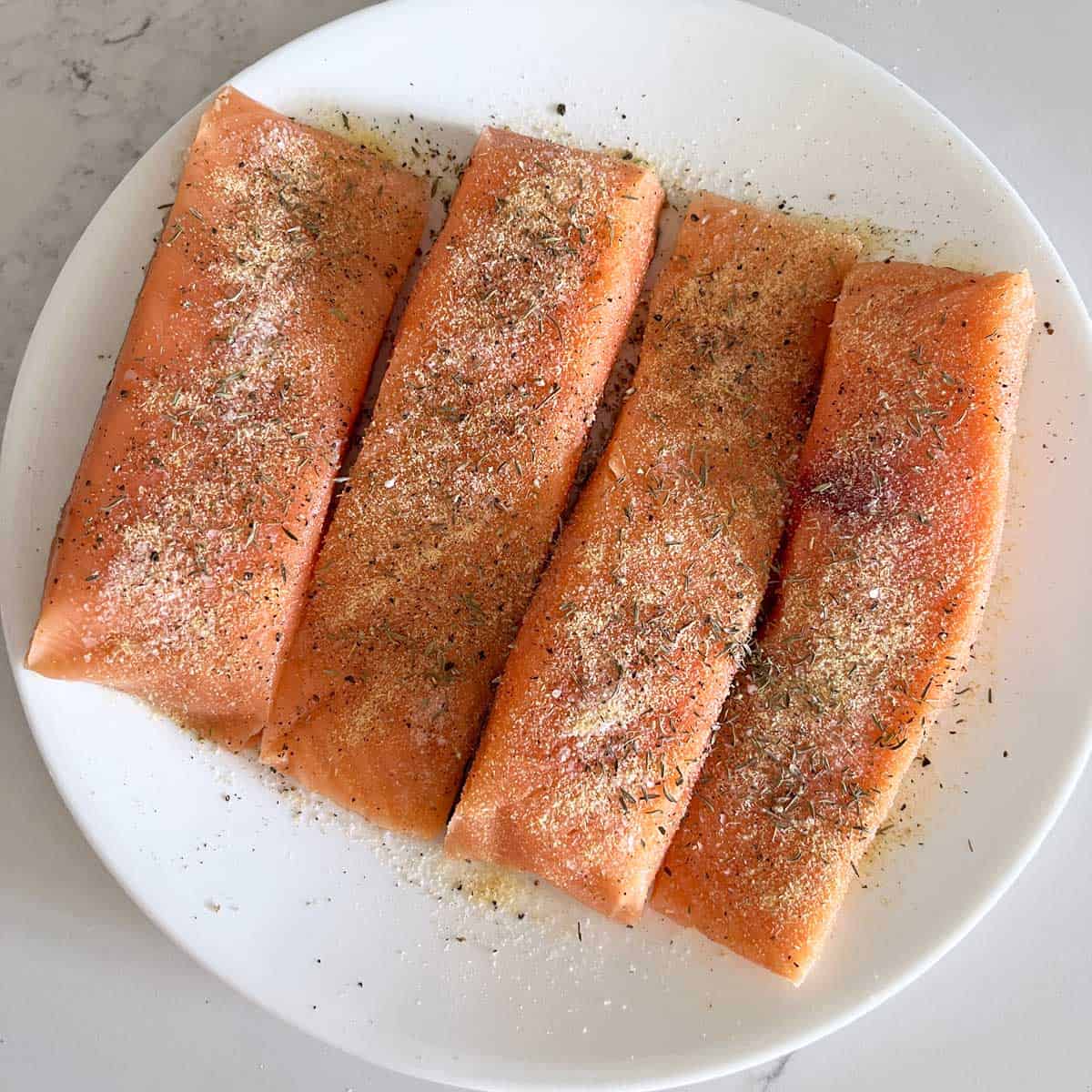

Next, heat olive oil and butter in a large skillet. You can use a nonstick skillet or a well-seasoned cast-iron skillet. When the butter starts foaming, add the salmon fillets, skin-side-down. You can add lemon slices, too, if the skillet is large enough to accommodate them.
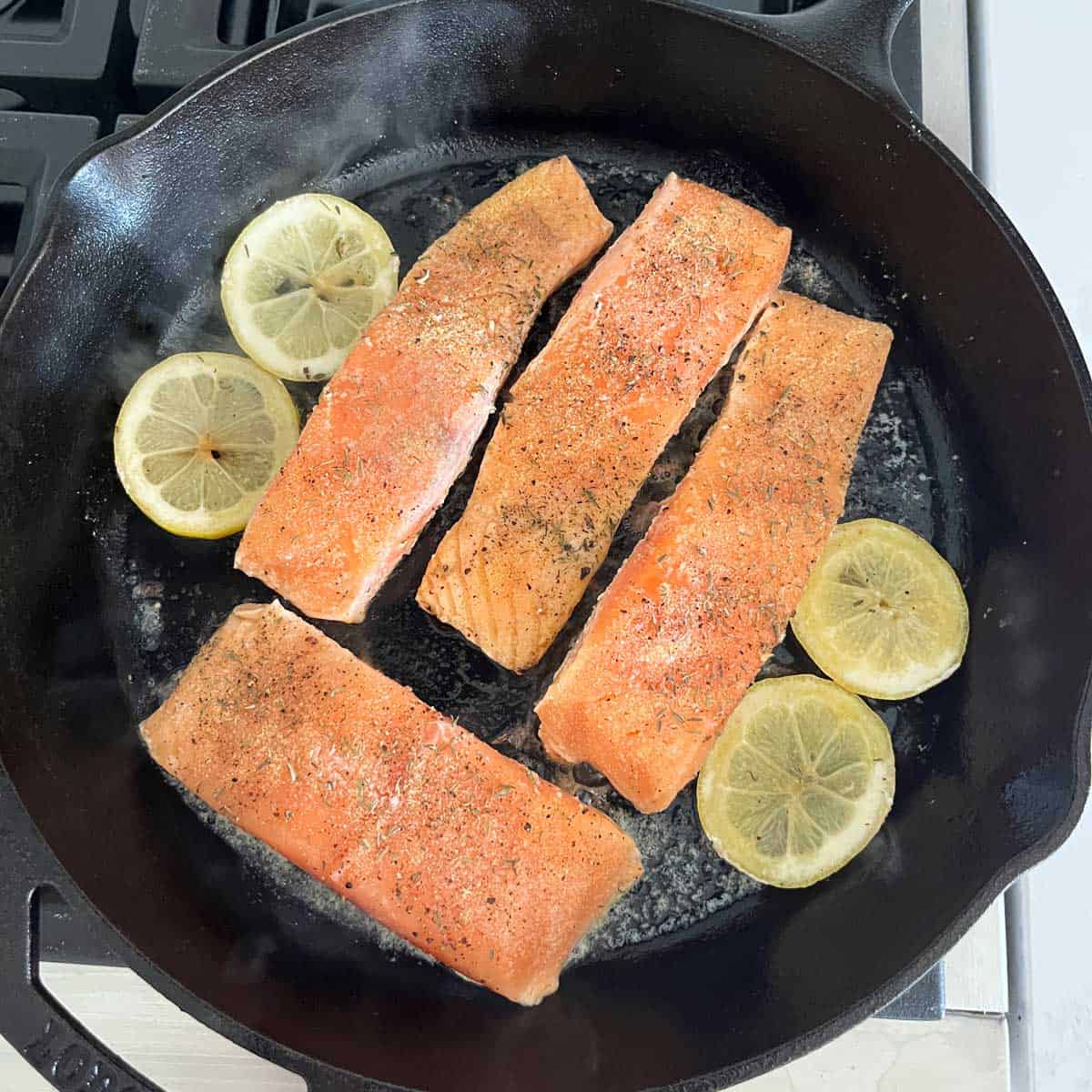

Sear the salmon, undisturbed, until the skin is crisp and browned, about 4 minutes. Flip it, lower the heat to medium, and cook it for 2-3 more minutes, or until it’s cooked through. Its internal temperature, as measured in the thickest part, should reach 145°F.


Transfer the cooked salmon to a plate, drizzle it with the pan juices, garnish with lemon and parsley, and serve.
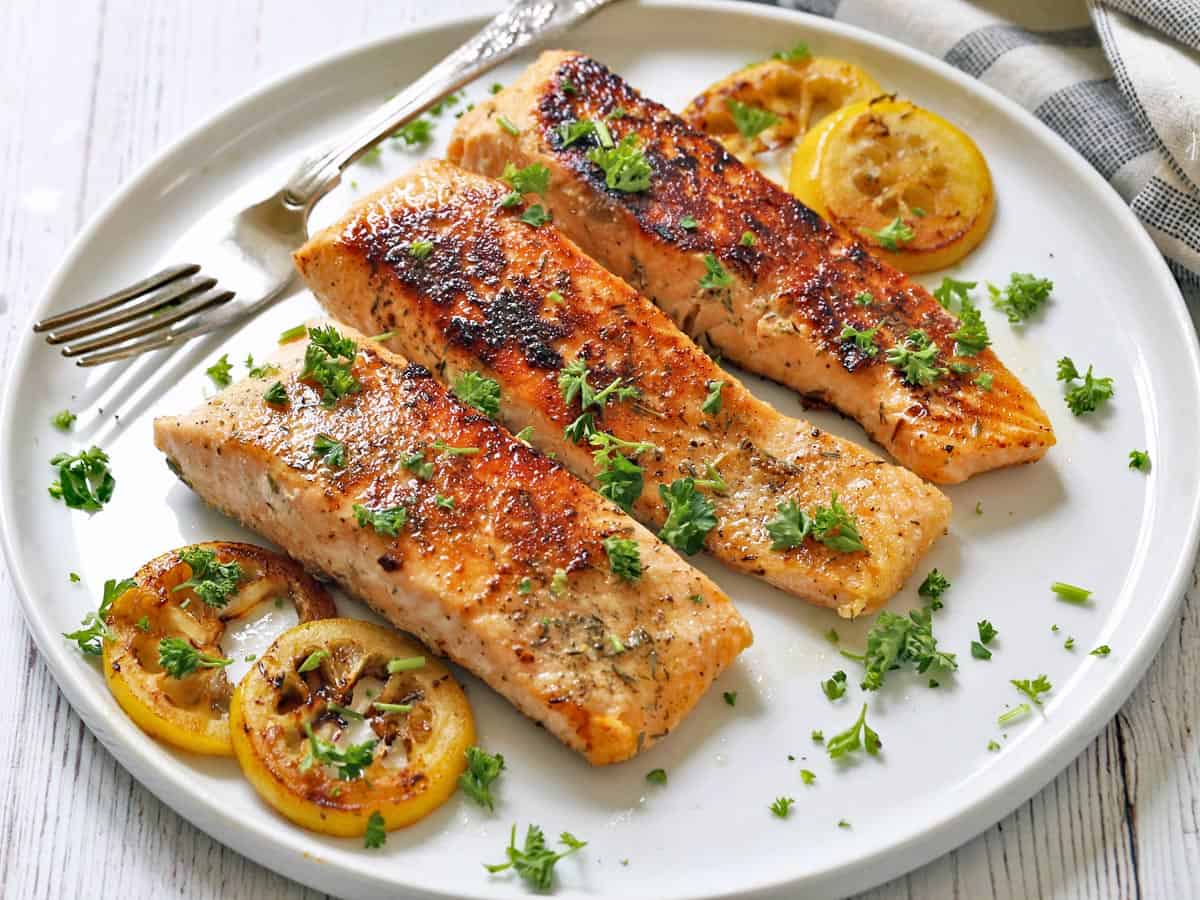

Expert Tips
- Don’t forget to drizzle (or brush) the salmon with the pan juices after you’ve arranged it on plates. The pan sauce is buttery and rich. It adds wonderful flavor to the dish.
- As mentioned above, the best skillets for this recipe are nonstick or well-seasoned cast-iron skillets. I don’t recommend using a stainless steel skillet in this recipe – the salmon skin tends to stick to it.
Recipe FAQs
When salmon is done, it transforms from red and translucent to pink and opaque.
The USDA recommends cooking fish to an internal temperature of 145°F. While many cooks feel it’s better to cook salmon to an internal temperature of 125°F or 130°F and let it rest for five minutes, I prefer to err on the side of caution and cook fish to an internal temperature of 145°F.
Apart from using a thermometer, another way to check for doneness is to gently press down on the top of the fish with a fork. If the flesh flakes (separates) easily, the salmon is done. But the only way to know for sure is to use a thermometer.
To ensure the skin is crispy, cook the salmon skin-side down for about four minutes over medium-high heat. Turn it to the other side only after you can see (when lifting the edge) that the skin is browned.
It’s also helpful to add enough fat to the frying pan, use butter (its milk solids have a blackening effect), and use a well-seasoned cast-iron skillet.
Yes. I love salmon skin, especially when fried and crispy. But if you prefer to cook it without the skin, simply follow the same instructions, cooking it for about 3 minutes per side.
No. I recommend thawing the salmon before using it in this recipe. It’s OK to use frozen salmon when baking salmon in the oven. But when pan-frying, the salmon should be thawed to ensure it is evenly cooked.
Storing Leftovers
You can keep the leftovers in the fridge, in an airtight container, for up to three days. I usually keep them in a glass food storage container, as shown in the photo below:
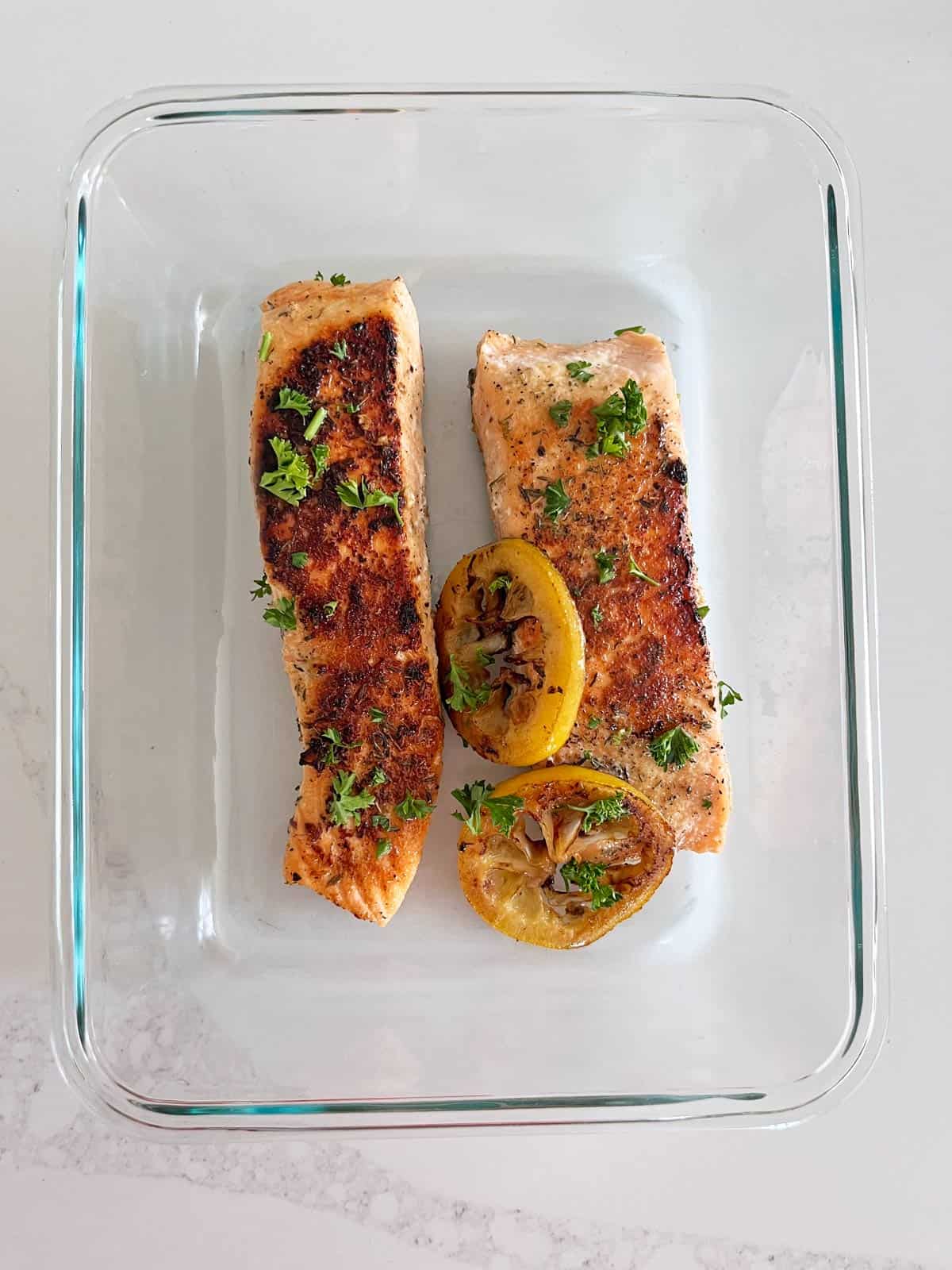

I prefer to avoid reheating them because reheating can dry them out. Instead, I crumble them cold (removing the skin first) over a salad such as this arugula salad. Or I use the cold salmon in this Cobb salad instead of chicken.
Sometimes, I chop the leftovers up, mix them with cream cheese, and have that for my lunch the next day on thick slices of almond flour bread. It’s delicious!
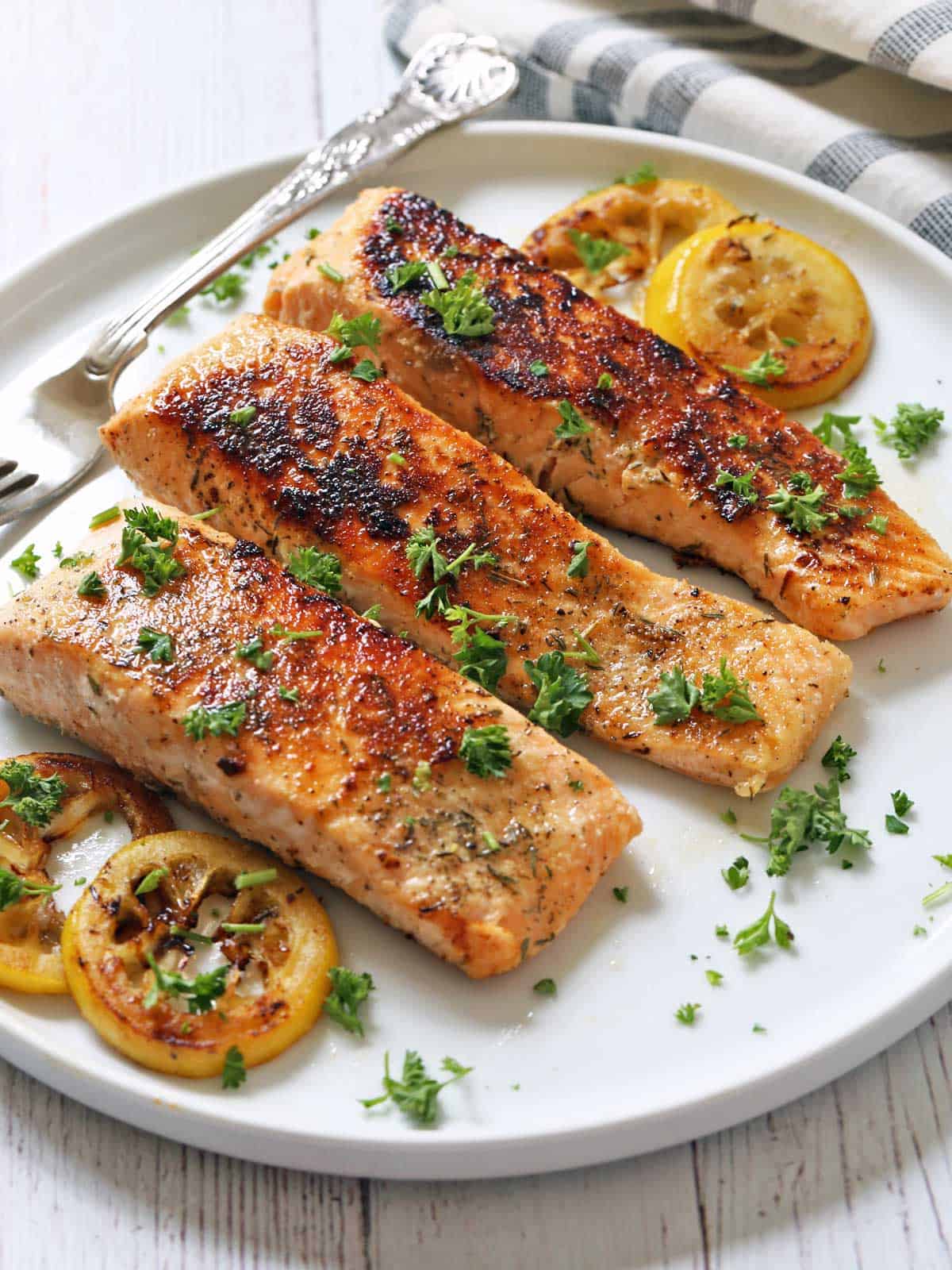

More Salmon Recipes
Foodie Newsletter
I send out a weekly newsletter with a recipe and tips. Want these recipes in your inbox? Subscribe today! You can unsubscribe at any time.
Recipe Card
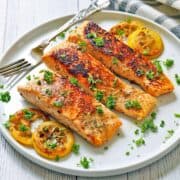

Save this RecipeSaved!
Pin Recipe
Share on Facebook
Print Recipe
Crispy Pan-Fried Salmon
Pan-fried salmon is delicious when cooked in butter and olive oil. The skin becomes wonderfully crispy, and the flesh is juicy and flavorful.
Servings: 4 servings
Calories: 245kcal
Prevent your screen from going dark
Instructions
-
Blot the salmon fillets dry with paper towels. Season them with salt, pepper, garlic powder, and dried thyme.
-
Heat a large (12-inch) cast-iron skillet over medium-high heat. Add the olive oil and butter and swirl to coat. You can also use a nonstick skillet.
-
When the butter starts foaming, add the salmon fillets, skin-side-down. If using, add the lemon slices.
-
Cook the salmon, undisturbed, until the skin is crispy and browned, for about 4 minutes. Flip the salmon and lemon slices, lower the heat to medium, and continue cooking for 3 more minutes.
-
If your fillets are ½ inch thick or more, cook the edges for about 2 minutes per side. The salmon’s internal temperature should reach 145ºF.
-
Transfer the salmon fillets to a serving plate and drizzle them with the pan juices. Garnish the plate with lemon slices and chopped parsley, and serve.
Notes
- If your salmon is frozen, thaw it thoroughly before using it in this recipe. You can thaw it overnight in the fridge.
- You can skip the olive oil and use two tablespoons of butter. The butter’s milk solids have a blackening effect, making the salmon extra-crispy.
- The best skillets for this recipe are nonstick or well-seasoned cast-iron skillets. I don’t recommend using a stainless steel skillet – the salmon skin tends to stick to it.
- Don’t forget to drizzle the salmon with the pan juices after you’ve arranged it on the plates. The pan sauce is delicious.
- You can keep the leftovers in the fridge, in an airtight container, for up to three days. I prefer to avoid reheating them because reheating can dry them out and make them taste fishy. Instead, I crumble them cold over a salad.
Nutrition per Serving
Serving: 1 fillet | Calories: 245 kcal | Carbohydrates: 1 g | Protein: 32 g | Fat: 12 g | Saturated Fat: 3 g | Sodium: 164 mg
Disclaimers
Cup measurements refer to the standard American cup, which is 240 milliliters. Most of my recipes are low-carb (or keto) and gluten-free, but some are not. Please verify that a recipe fits your needs before using it. Recommended and linked products are not guaranteed to be gluten-free. Nutrition info is approximate, and the carb count excludes non-nutritive sweeteners. Nutrition info may contain errors, so please verify it independently. Recipes may contain errors, so please use your common sense when following them. Please read these Terms of Use carefully before using any of my recipes.

